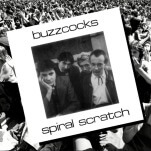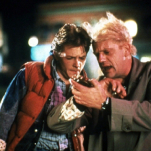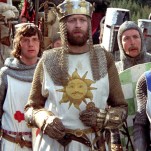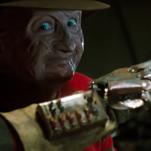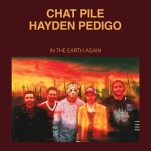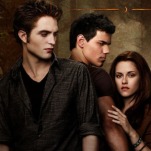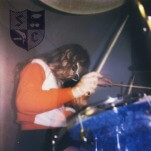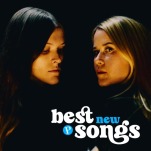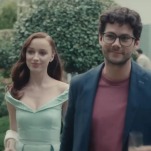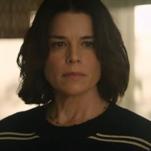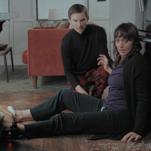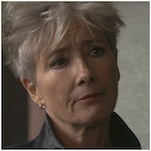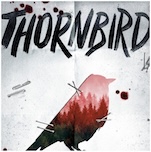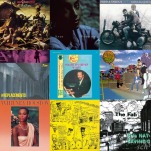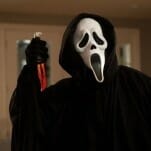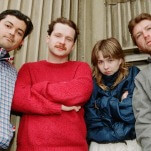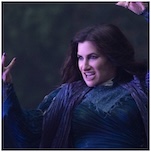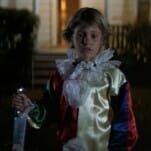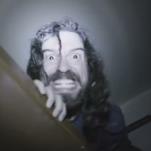The Best ’80s Movies on Netflix
Photo by Orion Pictures/Getty Images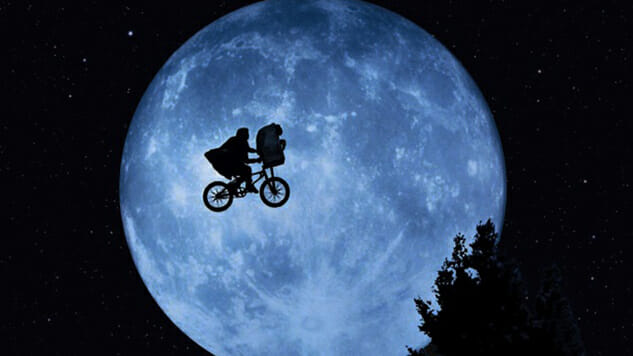
For all the harm that was done in the 1980s, from deregulation to the drug wars, the decade did deliver the age of the blockbuster, and several of its best examples are streaming on Netflix right now. Directors such as Spike Lee, Ridley Scott, Rob Reiner, Harold Ramis, Barry Levinson and Ivan Reitman delivered grand adventures, prestige drama and silly comedy that still hold up four decades later. It was the age of the numbered sequel, and the drive to make every film bigger and bolder than the previous. It’s no surprise that the ’80s movies on Netflix get a lot of attention.
These films are likely to leave Netflix soon, so enjoy your blockbusters while you can. Here are the best movies from the 1980s you can stream on Netflix right now.
E.T. the Extra-Terrestrial
Year: 1982
Director: Steven Spielberg
Stars: Henry Thomas, Drew Barrymore, Dee Wallace, Peter Coyote
Rating: PG
Steven Spielberg’s classic is many things: an ode to friendship which resonates with children and adults alike, one of the top-grossing films of all time and the moment Spielberg’s career, on a scale of 1-10, reached 11. Though the Academy would not award Spielberg the Best Director trophy until there were more Nazis involved, E.T. remains today perhaps the most deft expression of his directorial hand. —Michael Burgin
Ferris Bueller’s Day Off
Year: 1986
Director: John Hughes
Stars: Matthew Broderick, Jeffrey Jones, Mia Sara, Alan Ruck, Jennifer Grey, Edie McClurg
Rating: PG-13
John Hughes’ zeitgeist-y, fourth wall-busting ode to rich, entitled suburban youth vs. killjoy authority announced Matthew Broderick as a bona fide star, and gave us a chillingly prescient glimpse at Charlie Sheen’s future in an admittedly funny bit role. Breakfast Club aside, out of all Hughes’ decade of teen-centric movies set in the Chicago area, Bueller has almost certainly endured the best, and without all that tortured pretentiousness.—Scott Wold
The Blues Brothers
Year: 1980
Director: John Landis
Stars: John Belushi, Dan Aykroyd, James B. Brown
Rating: R
For an intensely absurd, farcical comedy, The Blues Brothers is so much more sincere than one would ever expect it to be, both in its adoration of classic blues and R&B and the way it captured a moment in the life of the city of Chicago. Indeed, this John Landis classic lovingly shows off a Chicago that no longer exists in several instances, most notably the Maxwell Street Market, Chicago’s great open-air flea market where one could buy just about anything, legal or illegal, and also gave birth to both Chicago blues and the famed Maxwell Street Polish sausage before the city forcibly moved the market to make room for university housing among other things. It doesn’t try to put a shine on the city, showing both the high-rent (the Richard J. Daley Center) and the low (Elwood’s flophouse, numerous low-income neighborhoods) right alongside one another. This is just one of those films that completely changes the popular conception of a cityscape–if you go to Chicago, you will start picking out things from The Blues Brothers. Trying driving on Lower Wacker Drive without thinking about the Bluesmobile rocketing along and police cars smashing into one another in absurdly spectacular pile-ups. It can’t be done. It might be Chicago’s single most beloved cinematic representation.–Jim Vorel
The Karate Kid
Year: 1984
Director: John G. Avildsen
Stars: Ralph Macchio, Pat Morita, Elisabeth Shue, William Zabka
Rating: PG
Ralph Macchio’s crane-legged Karate Kid would become an icon of the ’80s, as would Pat Morita as Mr. Miyagi, the sensei who trains the bullied Daniel LaRusso in martial arts. Although many of the scenes can feel a little worn and trope-laden, that’s mostly due to how much the film has been copied in the years since its release. It was the sort of feature that defined karate to an entire generation of young kids and must have inspired countless dojo openings and yellow belt ceremonies. It also features one of the great villains of ’80s cinema in the merciless Cobra Kai coach, Sensei John Kreese: “Sweep the leg, Johnny.” —Josh Jackson
Fast Times at Ridgemont High
Year: 1982
Director: Amy Heckerling
Stars: Jennifer Jason Leigh, Sean Penn, Judge Reinhold, Robert Romanus, Brian Backer, Phoebe Cates, Ray Walston, Vincent Schiavelli, Forest Whitaker
Rating: R
When people think of Fast Times they think of Sean Penn’s canonical California surfer, or the Phoebe Cates nude scene that seemed to be referenced on every single episode of VH1’s I Love the ’80s. People rarely want to talk about the heart of the movie, though: Jennifer Jason Leigh’s turn as Stacy Hamilton, a high school freshman desperate to grow up. That’s because Stacy’s story is painful, albeit truthful; she loses her virginity to a guy 10 years older than her who almost immediately cuts off contact, and then gets pregnant by a classmate who abandons her the day of her abortion. Amy Heckerling presents this all with a blunt matter-of-factness, with none of the prurience or afterschool special sermonizing that would be found in a movie made by lesser directors (or a male one). Fast Times gets heavy, and Stacy’s scenes can be hard to watch, but it’s that element of realism that elevates it above a typical high school sex comedy. —Garrett Martin
She’s Gotta Have It
Year: 1986
Director: Spike Lee
Stars: Tracy Camila Johns, Spike Lee, John Canada Terrell, Tommy Redmond Hicks
Rating: R
An explosively frank feature debut that immediately announced Lee’s brave, fresh new voice in American cinema, She’s Gotta Have It, shot like a documentary, is a levelheaded exploration of a young black woman named Nola (Tracy Camilla Johns) trying to decide between her three male lovers, while also flirting with her apparent bisexuality, in order to, first and foremost, figure out what makes her happy. What’s refreshing about the film is that Lee always brings up the possibility that “none of the above” is a perfectly viable answer for both Nola and for single women—a game changer in 1986. The DIY indie grainy black-and-white cinematography boosts the film’s in-your-face realism. —Oktay Ege Kozak
Grave of the Fireflies
Year: 1988
Director: Isao Takahata
Stars: Tsutomu Tatsumi, Ayano Shiraishi, Yoshiko Shinohara, Akemi Yamaguchi
Rating: NR
Isao Takahata’s Grave of the Fireflies is the harrowing story of two children whose lives are left devastated by the 1945 firebombing of Kobe. Adapted from the autobiographical story of Akiyuki Nosaka, the film follows Seita, a young Japanese boy forced to care for his younger sister Setsuko in the wake of a devastating Allied attack that leaves his hometown in ruins. To describe the sum of their tragedies as “horrifying” feels like a gross understatement. The horror of Grave of the Fireflies is not reliant on brooding over callous acts of violence or fixating on the macabre, but rather on the heart-wrenching futility of Seita and Satsuko trying desperately to cling to some shred of normalcy in a world devoid of peace and security. Whether it’s the scene of Seita setting eyes on his mother for the first time after the firebombing, or Satsuko inadvertently stumbling across a corpse while playing at the beach, the film raises these children’s hopes of escaping a living hell on earth as quickly as it dashes them. The film is extraordinary in that it shows the audience, with no uncertainty, that these children will perish and somehow through its hour-and-a-half running time compels the viewer to hope that this fate can be averted. Grave of the Fireflies is a chilling portrait of the fragility of human life when confronted by the indifferent brutality of an uncaring world, a film utterly unlike anything Studio Ghibli had produced before or since. Tragic in the truest sense of the word, Grave of the Fireflies is not only one of the greatest films the studio has ever produced, but unmistakably one of the greatest anime films of all time.—Toussaint Egan
Dune
Year: 1984
Director: David Lynch
Stars: Kyle MacLachlan, Jurgen Prochnow, Francesca Annis, Patrick Stewart, Sting, Brad Dourif, Virginia Madsen
Rating: PG-13
Before Denis Villeneuve, popular consensus on Frank Herbert’s iconic sci-fi novel Dune was that it might be unfilmable … because the great David Lynch had already tried to do just that in 1984, with mixed results. Lynch’s version of Dune has not maintained the best reputation among rank and file film fans, though it’s not hard to find ardent defense of it from cinematic aesthetes and devotees of Lynch’s filmography. What it undeniably has going for it is a grandiosity of visual style and panache, with incredible, overwrought costuming and set-dressings that evoke the interstellar peacocking that is absolutely present in Herbert’s tome. Less faithfully transcribed is Dune’s plot and themes of unavoidable horrors inherent in trying to exercise and wield power, even with good intentions. Lynch’s film isn’t given the space and running time necessary to really plumb these depths, an advantage now possessed by Villeneuve. The result is a more conventional revenge and messiah story, albeit one with all the idiosyncrasies of filming and performance one expects from Lynch’s oeuvre. Today, it’s worth watching for the costuming alone. —Jim Vorel
Weird Science
Year: 1985
Director: John Hughes
Stars: Anthony Michael Hall, Ilan Mitchell-Smith, Kelly LeBrock
Rating: PG-13
In the 1980s, supermodel Kelly LeBrock was the fantasy girl for a good chunk of America’s teen boy population. And while her sex symbol status never developed into anything approaching a sustainable acting career, it did lead to the iconic role of Lisa in 1984’s Weird Science. Technically speaking, it’s hard to discern whether or not Lisa even is a robot considering her creation primarily involved hooking a doll up to a government computer system, which somehow ends up spitting out a real-life female due to the ever-reliable movie trope that is “the convenient power surge.” Still, with the ability to dematerialize at will, conjure up kickass rides in a snap and transform people into talking piles of feces, she’s definitely more than human. And though 30 years later the idea of two put-upon young men inventing an ideal woman for their own pleasure carries a host of problematic questions, the film’s beyond-goofy tone manages to make the premise digestible. Plus, it’s not as though Lisa exists solely as cheesecake, displaying both a vibrant personality and intimidating intelligence. She is, as LeBrock once famously said, “Mary Poppins with breasts.” —M.R.
